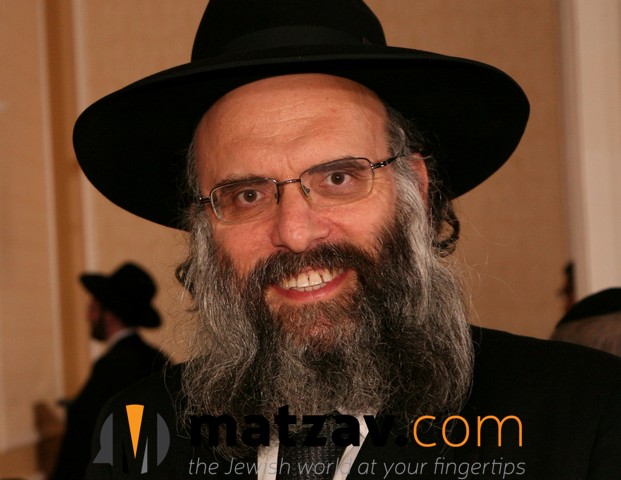
By Rabbi Yehoshua Berman
The Essence of Purim
As we all know, there is a tremendous amount of excitement on Purim. It is supposed to be totally for kedusha and in a manner that 100% conforms to Torah mandate. Alas, the reality on the ground is often anything but. The instances of undesirable and sometimes even tragic occurences – both spiritual and physical – runs the gamut. This fact forces us to wonder. Chazal decreed that shofar is not blown when Rosh Ha’Shana falls out on Shabbos. Likewise, the mitzvah of dalet minim is suspended on Shabbos. Why? Simply because we are concerned that someone may come to carry them through a public domain and thus violate Shabbos. Because of the potential of someone being nichshal – albeit not all that likely – Chazal cancelled these mitzvos. Why, then, did they not nullify Purim? Seeing that Purim – which is only m’d’Rabbanan, as opposed to shofar and dalet minim – carries potential for the occurrence of serious problems, why did Chazal not see fit to annul it?
By the second set of luchos, Rashi explains that “there is nothing better than modesty. Because the first luchos were given amidst a tremendous amount of drama, commotion, and excitement, it was susceptible to ayin hara and ended in disaster. The second luchos, on the other hand, were given under conditions of quietude and modesty and lasted.” The question, though, is this: what was the whole purpose of the gigantic to-do of the first luchos? Hashem obviously knew the lesson of “there is nothing better than modesty” even before the debacle of the eigel ha’zahav, so why didn’t he just do it in the quiet, modest manner right from the get-go?
What we can derive from this is that the great commotion and excitement, the kolos u’brakim was an absolute necessity. When Torah comes into the world, it comes in with brilliant lightning bolts and crashing thunder. This is what makes an enduring imprint on the entire creation – which stood in absolute stillness and attentive silence when Hashem appeared to His nation – that Torah has come down to this realm. Likewise, it is what engraved the eternal impression of Torah on the hearts of the Jewish People and caused it to be absorbed into their very lifeblood. Although the first luchos did not manage to endure because of the ayin hara that the great to-do brought about, the indescribably powerful impression that came along with them – which is critical for Torah’s perseverance – endures forever.
The underlying, fundamental characteristic of Purim is the hadar kibluha b’ahavah, the willing reacceptance of Torah – specifically Torah sheh’b’al peh – with great love and desire. The exterior manifestation of this kabbalas ha’Torah of Purim is the great and eminently public commotion of the spectacular salvation of the Jewish People to which the whole world bore amazed witness. This fantastic drama and fireworks is only fitting for a kabbalas ha’Torah. Nevertheless, the reacceptance of Torah itself that occurred on Purim was completely quiet and modest. It was hidden. The whole world had no idea that Klal Yisrael reaccepted the Torah with love. It was Klal Yisrael – in the private sanctum of their hearts – that took advantage of the Purim miracle’s thunder and lightning to lovingly reaccept the Torah in a way that it would remain forever engraved on their hearts.
So too is it for all generations. The great commotion that takes place outside on Purim day is what enables each ben Torah to experience the powerful impression of Purim which empowers him to reaccept the Torah with great love.
What is further fascinating about all this is the day that was chosen to be the Yomtov of Purim for all generations. It was not on the day that the miracle of salvation took place – which was on the day before Purim – it was the day of menucha, when Klal Yisrael rested following their victory over their enemies. This, in stark contrast to all other Yamim Tovim that were instituted on the day that the miracle thereof took place!
The reason for this, explained my rebbi Rav Yisrael Elya Weintraub, is that the miraculous salvation is not the main thing we are commemorating and celebrating on Purim. Rather it is the hadar kibluha b’ahavah, the loving reacceptance of Torah that is the primary cause for celebration and joy; and this took place specifically from within the state of menucha that Klal Yisrael experienced the day following their divinely orchestrated victory.
During their day of menucha – which parallels the menucha of Shabbos and is thus a taste of Olam Ha’Bah – when they were able to contemplate all that had happened and fully absorb its implications, they became so inspired by the miracle they had experienced that they were moved to reaccept the Torah with such powerful love and yearning. This, explained Rav Weintraub, is the essence of Purim and is why Chazal instituted it specifically on this day.
(From notes of Rav Twersky zt”l and notes of a talmid)
—————————
ושמו אצל המזבח ו:ג
This pasuk is describing the mitzvah of terumas ha’deshen, the daily removal of ashes from the mizbeiach and placing them on the floor right next to it. The Gemara in Pesachim (26a) says that we also learn from this pasuk that the ashes remain assur b’hanaah. It is prohibited to derive benefit from them. Normally, once the mitzvah of a particular kadosh item is completed – naaseis mitzvaso – its prohibition falls away. It is no longer forbidden to derive benefit from it. (For example, blood of korbanos that has already been sprinkled on the mizbeiach, one is m’d’Oraysah allowed to use as fertilizer.) This is a general rule: naaseis mitzvaso, the mitzvah has been completed so the item is no longer prohibited to use for personal benefit.
Terumas ha’deshen, though, asks the Gemara, seems to be a contradiction to this rule. The korban has already been fully burned on the mizbeiach – its mitzvah is done – yet the ashes remain forbidden for personal benefit! The Gemara there answers that we find another exception to the rule of naaseis mitzvaso – either bigdei kohein gadol or eglah arufah – and we therefore apply the concept that we cannot learn a general rule from two examples of the same principle (shnei kesuvin ha’bain k’echad).
Reb Chaim (Brisker) holds that the rule of naaseis mitzvaso only applies to kadshei mizbeiach but not not kadshei bedek ha’bayis. The reason, explains Reb Chaim, is that the rule of naaseis mitzvaso is not an inexplicable gezeiras ha’kasuv but a milsah d’sevara. It is simple logic. To understand the logic, it is necessary to understand the fundamental difference between the kedusha of korbanos, on the one hand, and that of the general Beis Ha’Mikdash estate/treasury, on the other. Kadshei mizbeiach, korbanos and everything associated therewith, are kadosh l’mitzvaso. In other words, the whole kedusha of a korban is in order to do with it the appropriate mitzvah pertinent thereto. It being designated for the mitzvah of sacrificial offering is what generates its kedusha. As such, once the mitzvah is done, the kedusha has been used up. Since there is no further sacrificial mitzvah left to be done with it, it reverts back to being full-fledged chullin, a regular non-kadosh item.
Kadshei bedek ha’bayis, on the other hand, are not kadosh because of a particular mitzvah that needs to be done with them. Even when an item of the general Beis Ha’Mikdash estate/treasury does have some mitzvah that needs to be done with it, that is not the source and cause of its kedusha. Rather, what makes it kadosh is the fact that it belongs to Hekdesh. Temple Treasury is a fully legal entity. Kadshei bedek ha’bayis means that it belongs to Hekdesh, the Temple Treasury. It is the statutory ownership of Hekdesh that makes the item kadosh. Therefore, naaseis mitzvaso – its mitzvah having already been done – has no bearing on this kedusha.
This all being the case, it is quite difficult to understand why the Gemara had a kashya from terumas ha’deshen on the rule of naaseis mitzvaso. If not for the pasuk of v’samoh eitzel ha’mizbeiach, what would we have thought? That after it is fully burned, the mitzvah is finished and it is no longer forbidden to derive benefit from it. Now, what is the pasuk telling us? That there is still a mitzvah to be done with it! You have to take from the ashes, put it on the floor next to the mizbeiach, and it has to remain there. Terumas ha’deshen, then, remains with a mitzvah. Its mitzvah is never finished. So in what sense is it an exception to the rule of naaseis mitzvaso?! On the contrary, it would seem to be completely in accordance with this rule. It would have been permissible to derive benefit from the ashes if no more mitzvah would be left to do with it – as the rule of naaseis mitzvaso dictates – and the pasuk tells us that, really, there is a mitzvah left to do with it. Namely, terumas ha’deshen. So, again, in what way is it an exception to the rule of naasesi mitzvaso?
Apparently, the answer is that the mitzvah of terumas ha’deshen is not that it has to remain next to the mizbeiach, but just to place it there. Once that placement has been executed, there really is no more mitzvah left to do with it, and yet it remains assur b’hanaah. This, then, is indeed an exception to the rule.
(Audio recording available here [23:15-39:48]. Ed. note: If you listen to the recording of this shiur, you’ll hear that Rav Twersky presented this kashya and then opened the floor to the bachurim to offer an answer. One of the bachurim offered the above answer. It is pretty clear, though, that Rav Twersky seemed to hold that the mitzvah of terumas ha’deshen is not just to place the ashes next to the mizbeiach, but that they have to remain there; and that the above answer therefore does not suffice. Rav Twersky seemed prepared to offer his own resolution, but in the end he refrained from saying anything further about the matter. This is not surprising, as Rav Twersky often seemed reticent to proffer his own novel insights.)
——————-
Quote of the Week
“It is but a mere hairsbreadth that separates between an act of drinking which is a mitzvah filled with kedusha and spiritual elevation and that which is the opposite.”
———————-
Featured Story
When Rav Twersky was still a bachur living in his parents’ home in Boston, he used to learn late at night and the steam was already off. It was very cold, so he used to drink a bit of schnapps to warm himself up and then continued learning. During other times when he wanted to stay up to learn, he would drink very concentrated coffe. He said that it tasted so awful that he would not make a beracha since it was like medicine. Later in life, Rav Twersky said that he regretted having stayed up so late since he felt that the quality of the learning was impaired by doing so.
(From Reb Yitzchak Lichtenstein)
To read more divrei Torah and stories of Rav Twersky visit VayigdalMoshe.com
{Matzav.com}











